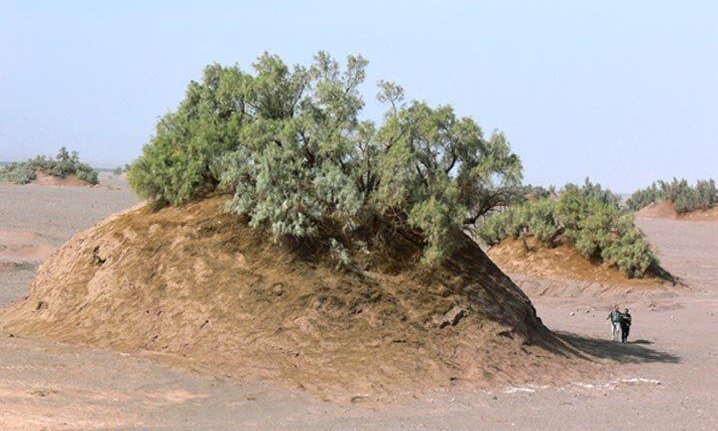Kerman festival to spotlight giant coppice dunes

TEHRAN – The tourism directorate of Kerman province is scheduled to hold a local festival in celebration of nabkhas, which are sand dunes formed around vegetation.
The ancient town of Fahraj will play host to the weeklong event that includes cooking local dishes, a camel riding competition, and local indigenous games such as Chuchab and tug-of-war, CHTN reported.
Situated adjacent to the UNESCO-registered Lut desert, Fahraj, and its surroundings are home to giant types of nabkha that are known as coppice dune, shrub-coppice, hummock, rebdou, or photogenic mound.
Live performances, handicraft sale exhibits, and local rituals are other elements to be held at the event, which is scheduled to start on January 30, the report said.
In October 2021, the “world’s largest” was found in the Lut Desert, the director of the World Heritage site announced. Having a height of 21 meters, the nabkha is taller than those in Africa and some desert regions of the world, Mehran Maqsudi explained.
The creation of nabaka is closely linked to the type of plant, wind direction and the amount of sand source. In the desert lands, everything is created from the wind and soil erosion and saltwater, but nabkha symbolizes the synergy of the plants and the arid region of the Lut Desert.
Lut Desert and Sahara in Africa are the only places in the world where nabkha species are observed. Nabkha is generally found on flat surfaces with moderate sand levels and high groundwater levels or enough moisture to grow plants.
These natural phenomena are a result of the interaction of wind erosion, moisture, and vegetation in the area. The plants gradually form sand dunes at the bottom by obstructing the sand storm and accumulating sand.
The origin of nabkha is the plants, however, it can be considered that nabakha will be formed in all desert lands where vegetable life is in progress.
Nabakha’s shape is a function of the size, density, and growth of the host plant. There is a type of Tamarisk tree in the region that is the main host of the nabkha. These Tamarisk trees must have a height of 10 to 15 centimeters in length at least to be able to control the sand.
If the sand grains do not adhere to the clay elements, their volume might be changed by variations in wind speed. By increasing the amount of sand at the foot of the plant, the plant continues to grow in an upward direction to prevent its burial. The plant continues growing as well as the plant’s root is connected to the groundwater level. But where the groundwater level drops, nabkha dies.
AFM
